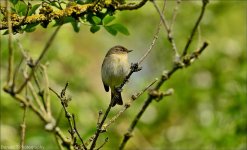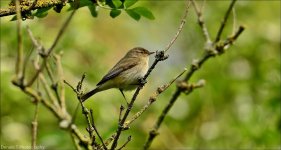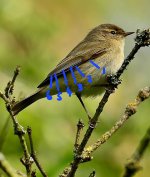See attached, Seawatcher.
I've labelled the first six primaries. Chiffchaff has emarginations on P3-6, Willow Warbler on P3-5 only. The point where the pale leading edge of the feather apparently 'disappears' is the emargination - on a feather without an emargination you would be able to see the entire straight edge of the feather in this view, as in P7 immediately above P6. See also here for a clear example of the difference between the two species:
This is a diagnostic feature in the hand or if visible in a good photograph, but very rarely of much use in the field, where you are better off concentrating (assuming the bird is not calling or, even better, singing) on the combination of wing length, face pattern, and other supporting features.







